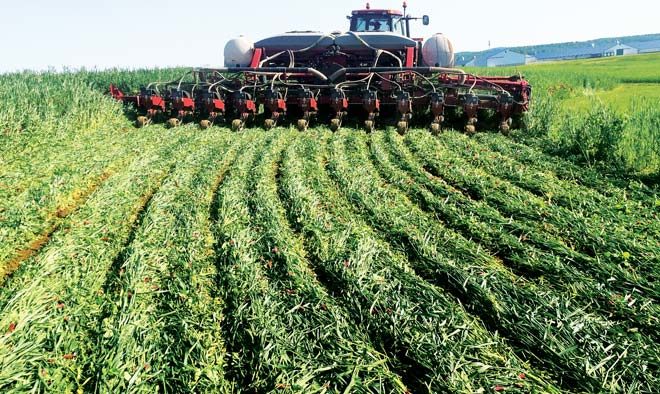No-Till Farmer
Get full access NOW to the most comprehensive, powerful and easy-to-use online resource for no-tillage practices. Just one good idea will pay for your subscription hundreds of times over.

Crop prices may be down, but that isn’t stopping no-tillers from using cover crops. In fact, more no-tillers are seeding them than ever before — No-Till Farmer’s 2016 No-Till Operational Benchmark Study found a record 77% of survey respondents seeded covers last year (see page 42), making 2016 the fifth consecutive year where the number increased.
The survey also found that cereal rye was the No. 1 seeded cover crop, with 62% of no-tillers growing the species.
As more no-tillers implement this practice and seed species that are still thriving in the spring, they may need to tweak their planting practices so their cash crops successfully emerge from the biomass of covers that remain.
We asked no-tillers who have been planting into cover crops — dead or alive — what adjustments they’ve made to their planter, challenges they’ve run into and how they overcame them, and other considerations for no-tillers who are just trying this practice for the first time.
There are very few challenges we’ve faced with planting green into cover crops — in fact, we’ve had fewer challenges since planting green. We’ve completely eliminated our slug pressure and we’re able to hold moisture longer into the growing season.
We currently use a Case IH 1240 planter set up with Dawn ZRX rollers and smooth row cleaners. We apply starter fertilizer in-furrow through the planter and dribble liquid nitrogen on top of the ground behind the press wheel. We also have Precision Planting’s PrecisionMeters…